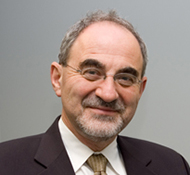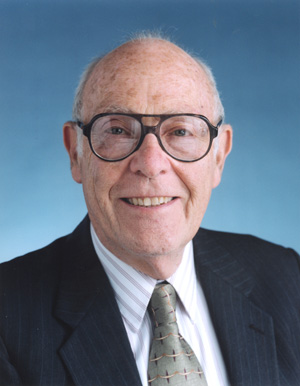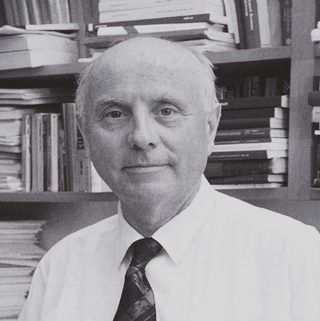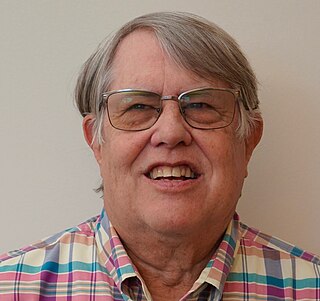Related Research Articles

Eli Yablonovitch is an American physicist and engineer who, along with Sajeev John, founded the field of photonic crystals in 1987. He and his team were the first to create a 3-dimensional structure that exhibited a full photonic bandgap, which has been named Yablonovite. In addition to pioneering photonic crystals, he was the first to recognize that a strained quantum-well laser has a significantly reduced threshold current compared to its unstrained counterpart. This is now employed in the majority of semiconductor lasers fabricated throughout the world. His seminal paper reporting inhibited spontaneous emission in photonic crystals is among the most highly cited papers in physics and engineering.

David Morris Lee is an American physicist who shared the 1996 Nobel Prize in Physics with Robert C. Richardson and Douglas Osheroff "for their discovery of superfluidity in helium-3." Lee is professor emeritus of physics at Cornell University and distinguished professor of physics at Texas A&M University.

John Werner Cahn was an American scientist and recipient of the 1998 National Medal of Science. Born in Cologne, Weimar Germany, he was a professor in the department of metallurgy at the Massachusetts Institute of Technology (MIT) from 1964 to 1978. From 1977, he held a position at the National Institute of Standards and Technology. Cahn had a profound influence on the course of materials research during his career. One of the foremost authorities on thermodynamics, Cahn applied the basic laws of thermodynamics to describe and predict a wide range of physical phenomena.

Robert Blinc was a prominent Slovene physicist a full professor of physics and, with more than 650 articles in prestigious international journals and two extensive monographs published abroad, a highly regarded and quoted researcher in condensed matter physics.

David Turnbull was an American physical chemist who worked in the interdisciplinary fields of materials science and applied physics. Turnbull made seminal contributions to solidification theory and glass formation. Turnbull was born in Elmira, Elmira Township, Stark County, Illinois. He graduated from high school in 1932 and then received a bachelor's degree in 1936 from Monmouth College (Illinois), specializing in physical chemistry. He received his Ph.D. in physical chemistry under Thomas Erwin Phipps from the University of Illinois in 1939. He was on the faculty of Case Institute of Technology from 1939 to 1946 before eventually becoming a professor at Harvard University.

George Harry Heilmeier was an American engineer, manager, and a pioneering contributor to liquid crystal displays (LCDs), for which he was inducted into the National Inventors Hall of Fame. Heilmeier's work is an IEEE Milestone.
Harry Eugene Stanley is an American physicist and University Professor at Boston University. He has made seminal contributions to statistical physics and is one of the pioneers of interdisciplinary science. His current research focuses on understanding the anomalous behavior of liquid water, but he had made fundamental contributions to complex systems, such as quantifying correlations among the constituents of the Alzheimer brain, and quantifying fluctuations in noncoding and coding DNA sequences, interbeat intervals of the healthy and diseased heart. He is one of the founding fathers of econophysics.
Tom C. Lubensky is an American physicist. He is currently the Christopher H. Browne Distinguished Professor at the University of Pennsylvania, where he was Mary Amanda Wood professor of physics (1998–2009) and chair of the Department of Physics and Astronomy.

David R. Nelson is an American physicist, and Arthur K. Solomon Professor of Biophysics, at Harvard University.

James R. Chelikowsky is a professor of physics, chemical engineering, and chemistry at The University of Texas at Austin. He is the director of the Institute for Computational Engineering and Sciences' Center for Computational Materials. He holds the W.A. "Tex" Moncrief Jr. Chair of Computational Materials.
Patricia Elisabeth Cladis was a Canadian-American physicist who specialized in the physics of liquid crystals. She was a research physicist at Bell Labs in Murray Hill, New Jersey from 1972 to 1997 before founding Advanced Liquid Crystal Technologies in Summit, New Jersey. She was a fellow of the American Physical Society and also received a Guggenheim fellowship.
Ashvin Vishwanath is an Indian-American theoretical physicist known for important contributions to condensed matter physics. He is a professor of physics at Harvard University.

Nelamangala Vedavyasachar Madhusudana is an Indian physicist and an emeritus scientist at Raman Research Institute. Known for his research on liquid crystals, Madhusudhana is an elected fellow of Indian Academy of Sciences and Indian National Science Academy. The Council of Scientific and Industrial Research, the apex agency of the Government of India for scientific research, awarded him the Shanti Swarup Bhatnagar Prize for Science and Technology, one of the highest Indian science awards, for his contributions to physical sciences in 1989.
Arthur Brooks Harris, called Brooks Harris, is an American physicist.
Noel Anthony Clark is an American physicist, university professor at the University of Colorado Boulder, and pioneer in the development of electro-optical applications of liquid crystals.
Andrea Cavalleri is an Italian physicist who specializes in optical science and in condensed matter physics. He is the founding director of the Max Planck Institute for the Structure and Dynamics of Matter in Hamburg, Germany and a professor of Physics at the University of Oxford. He was awarded the 2018 Frank Isakson Prize for his pioneering work on ultrafast optical spectroscopy applied to condensed matter systems.
Thierry Giamarchi is a French physicist.
Karin M. Rabe is an American condensed matter and computational materials physicist known for her studies of materials near phase transitions, including ferroelectrics, multiferroics, and martensites. She also works on the theoretical design of new materials. She is a distinguished professor and Board of Governors Professor of Physics at Rutgers University.

Dragan Damjanovic is a Swiss-Bosnian-Herzegovinian materials scientist. From 2008 to 2022, he was a professor of material sciences at EPFL and head of the Group for Ferroelectrics and Functional Oxides.
Allen Marshall Goldman is an American experimental condensed matter physicist, known for his research on electronic transport properties of superconductors and for the eponymous Carlson-Goldman mode involving collective oscillations in superconductors.
References
- ↑ biographical information from American Men and Women of Science, Thomson Gale 2004
- ↑ "Robert B. Meyer". Martin A. Fisher School of Physics, Brandeis University.
- 1 2 3 4 "Robert B. Meyer, CV and list of publications" (PDF).
- ↑ "David Turnbull Autobiography" (PDF). Official website. Materials Research Society. pp. 45–46.
- ↑ Buckley Prize 2006
- ↑ "Fellows from Brandeis University". American Physical Society.